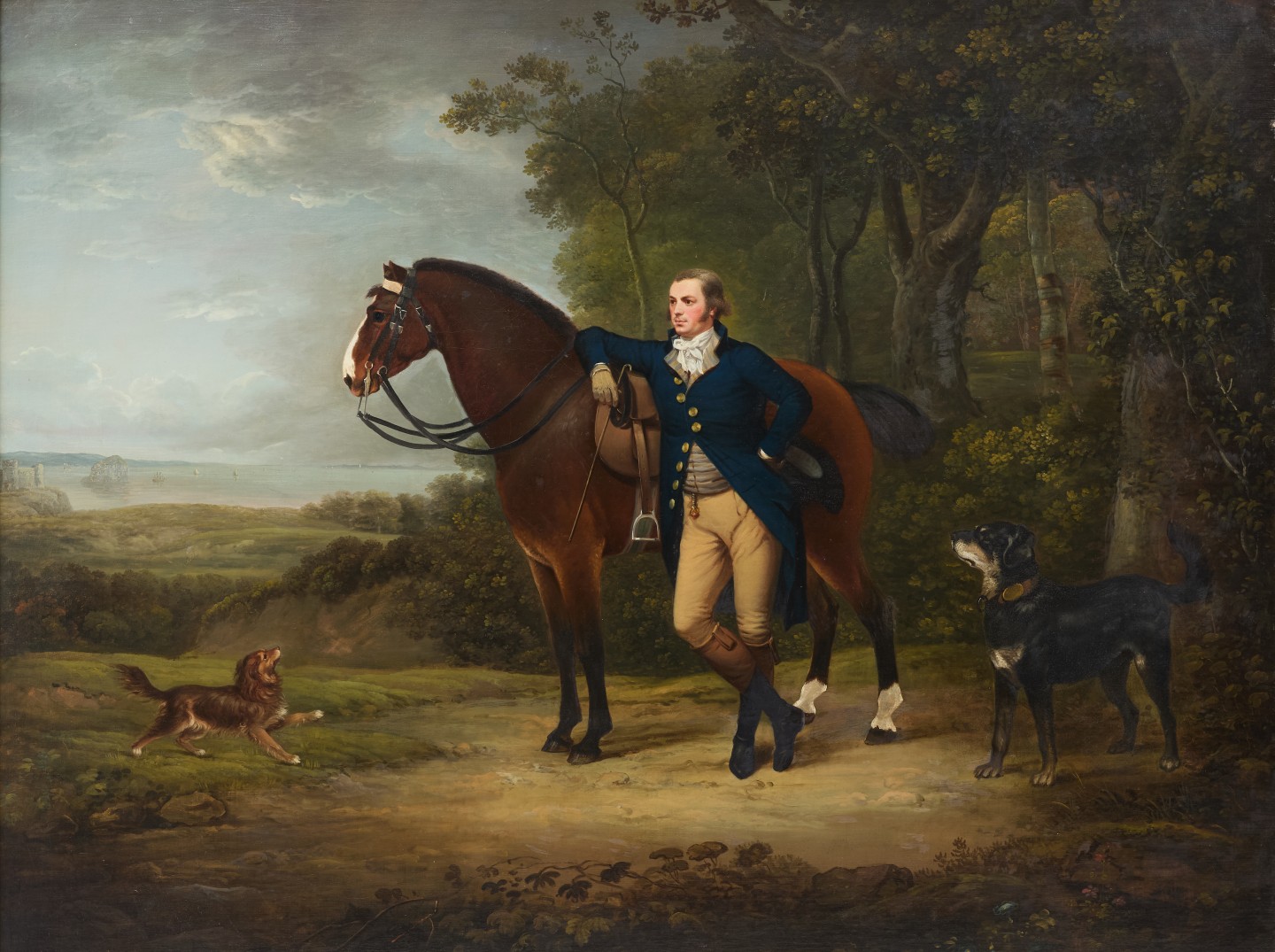DESCRIPTION
The castle in A Stormy Highland Scene has been identified as Culzean Castle on the Ayrshire coast. Nasmyth has romanticised the castle and, judging from the mountains seen dimly in the distance, has moved the island of Arran several miles further south than it is in reality. However, the artist did not intend the painting as a representation of the scene but rather a capriccio on the theme of the castle, with the island (if that is what it is) forming a dramatic backdrop. There are two other almost identical versions of the painting, one with two figures standing beside another on horseback in the foreground and the other devoid of figures. The presence of figures suggests that the picture may have been commissioned in connection with the illustration of a work by Sir Walter Scott, with whom Nasmyth was acquainted, or inspired by an incident from one of his works. Around 1819 the artist was asked by the Edinburgh publishers Constable to provide illustrations for Scott's poems and novels, and at about the same time he was asked to paint stage scenery for a production of Scott's Heart of Midlothian, one of a number of such commissions Nasmyth undertook.
DETAILS
-
Artist
Alexander Nasmyth
-
Date
c. 1810
-
Medium
Oil on canvas
-
Object number
707
-
Dimensions unframed
81.2 × 106.7 cm
-
Dimensions framed
113 × 144 cm
-
Place depicted
Highland (2646944)
-
Subject
ARTIST PROFILE
Alexander Nasmyth, 1758-1840
Sir David Wilkie described Nasmyth in a posthumous tribute as "the founder of the Landscape Painting School of Scotland". A man of many accomplishments, including engineering and architectural design, and a great friend of Robert Burns, Nasmyth was one of the leading figures in Edinburgh's cultural renaissance in the late eighteenth and early nineteenth centuries. His house was a meeting place for men of virtually every branch of intellectual pursuit. An excellent teacher, he offered landscape classes for amateur and professional artists from his home in York Place, which were later taken over by his daughter Jane. Some of his other children also became landscape painters, notably Patrick and Charlotte.
Nasmyth was born in Edinburgh’s Grassmarket, the son of a prominent architect-builder. While apprenticed to a house painter and decorator he attended art classes at the Trustees' Academy under Alexander Runciman. There he came to the notice of the Scottish portrait painter Allen Ramsay, who persuaded him to move to London as an assistant. Nasmyth worked in Ramsay's studio, where he was introduced to Italian art, for four years. After a further period in Edinburgh, working as a portrait painter, Nasmyth was financed by one of his patrons to spend two years in Italy. On his return to Edinburgh he took up landscape painting, evolving an influential style - large-scale panoramic views of Scottish country houses and castles in which "topographical accuracy was united with a distinctive picturesque sensibility".





